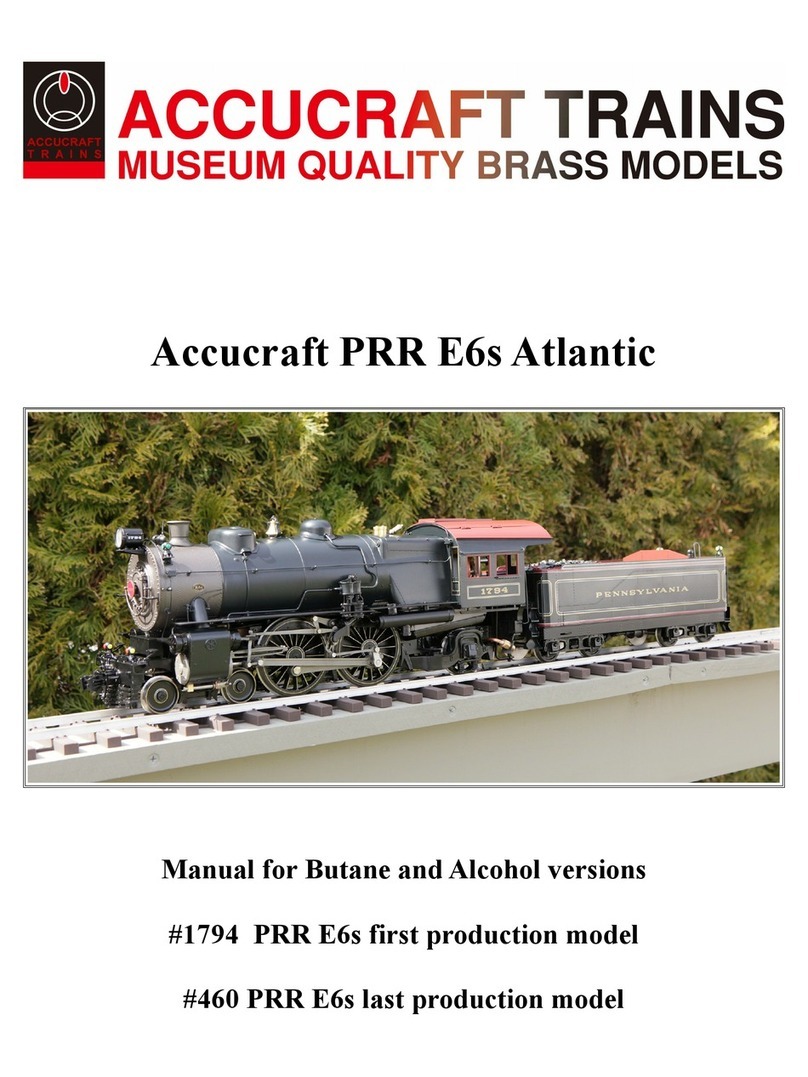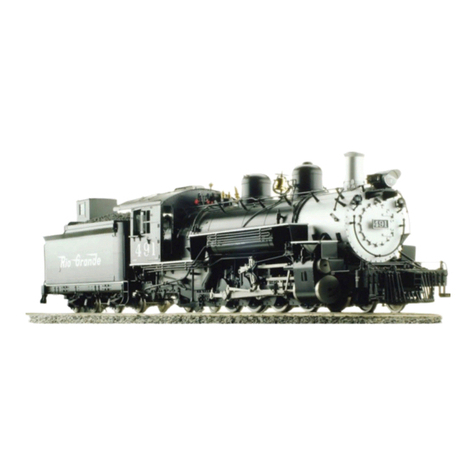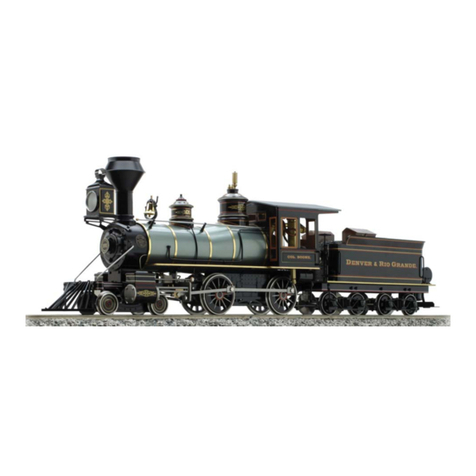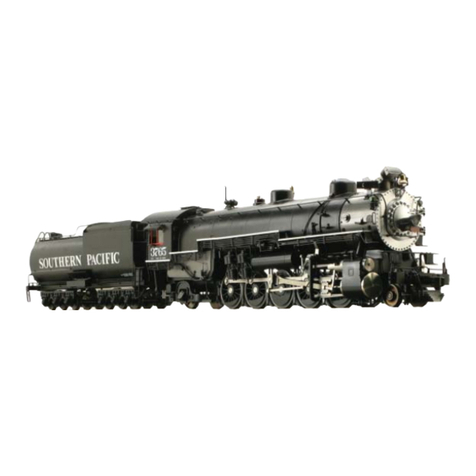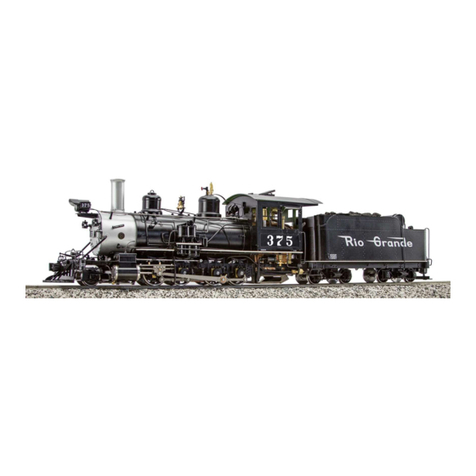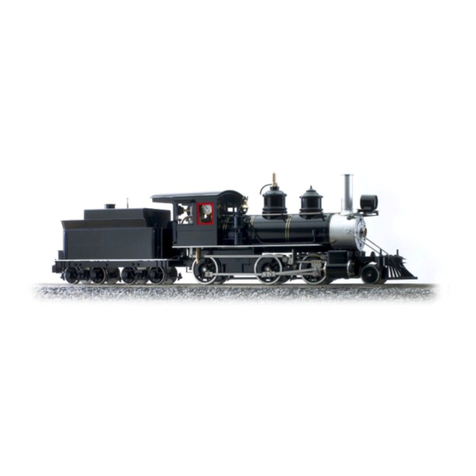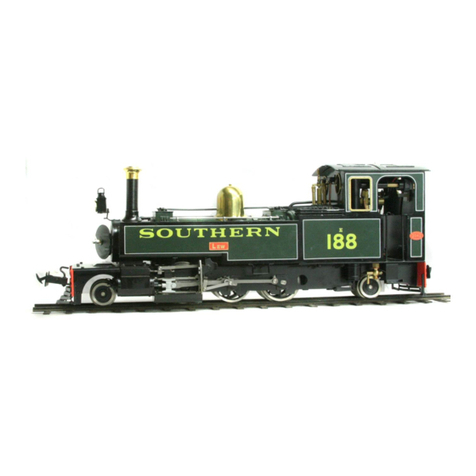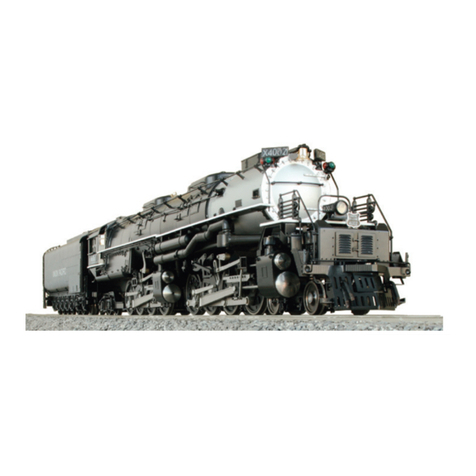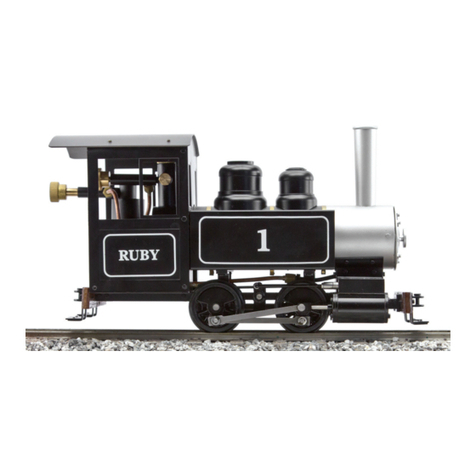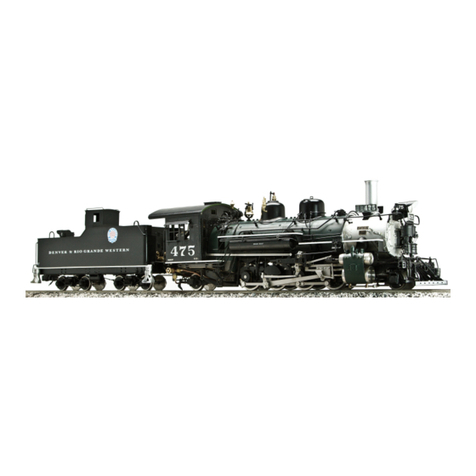C-25 Live Steam
Preparing the engine
A steam-locomotive engineer goes
through a lighting-up ritual every time
the engine is to be run. It is good to
follow the same routine each time so
that nothing is overlooked.
1. Oil all external moving parts of the
engine, including wheel bearings, with
a high grade, lightweight machine oil
like 3-in-1. Be sure to oil all parts of the
drive train.A little oil is all that’s neces-
sary.
2. Place the engine on track.
3. The adjustable lubricator located
in the cab ensures the cylinders and
valves are properly lubricated inside.
The adjustable lubricator valve handle
should be open at least two full turns
when the engine is breaking in. The
break in period should be approx. two
hours. If you notice excessive oil use
after that period of time then close the
valve to one full turn.
As the steam passes through it, a
small amount will condense into
water. This water will sink to the bot-
tom of the lubricator, forcing a similar
quantity of oil into the steam line and
thus to the cylinders.
5
Gas line to locomotive
Water line to locomotive
Water filler plugLubricator
Water level gauge
Pressure gauge
Throttle
C-25 Live Steam
Remove the lubricator cap and draw
out any water from previous run with
a syringe. Use only proper steam cyl-
inder oil. Fill the lubricator, but leave
a small air space between the oil and
the cap.
4. Unscrew the filler plug and fill the
boiler to the top with water then pull
out 30 ml with large syringe. Use only
distilled water in your engine’s boiler.
Tap water contains minerals that will
leach out and ultimately affect the per-
formance of the engine.
5. Finally, add fuel. Your C-25 burns
butane gas. The gas tank is located
in the tender beneath the front hatch.
Butane gas can be purchased at the
grocery store or at a tobacconist’s as
cigarette-lighter refills. These come
with a nipple suitable for the filler valve
on the C-25’s gas tank. (Butane can
also be purchased in larger containers
at camping-supply stores, but these
cans will require a special adapter for
filling the engine’s tank.) Simply press
the nozzle of the butane canister hard
onto the filler valve atop the tank,
making sure that the control valve is
closed. You will hear the gas transfer-
ring and will see a little gas bleeding
out of the valve. When the tank is full,
the gas will begin to splutter and much
more gas will escape the valve. When
the gas tank is full you are ready to fire
up the engine. Add 1” to 2” of water to
the rear tank. This will keep the tank
warm and the gas pressure up!
Firing up
Make sure the throttle is closed. The
engine’s burner resides at the back
of the flue inside the boiler. Open the
hinged smokebox door at the front of
the engine and you’ll be able to see
the flue. To light up, strike a match
and hold it at the open smokebox door
while simultaneously opening the gas
valve in the tender very slowly until the
gas ignites. You should hear the gas
coming into the burner. Opening the
valve too wide or too fast may blow
out the flame or cause the fire to burn
in the smokebox.
The fire should flash back into the
back of the flue with a quiet “pop”. If
it wants to burn in the smokebox or
in the forward part of the flue, slowly
close the gas valve until it flashes back
to the burner. Don’t let the fire burn in
the smokebox - your engine will not
run as it should and may be damaged.
The fire should burn under the burner
in a crescent-shaped flame, which
should be clearly visible through the
smokebox door. The flame should be
bright blue and should burn steadily.
If it sputters or looks yellow or green,
adjust the gas valve accordingly. The
object is to run the burner at the low-
est setting possible to operate the en-
gine, thereby increasing the efficiency
of the engine and the duration of the
run. You’ll get the hang of this with
practice.
6
